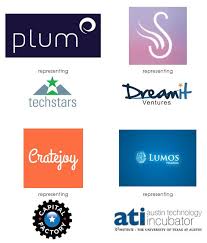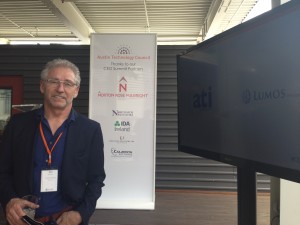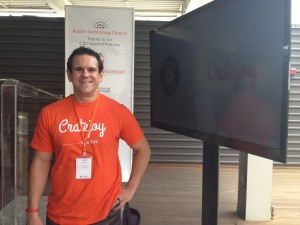By LAURA LOREK
Founder of Silicon Hills News
 The Austin Technology Council’s Startup Showdown builds a bridge between the startup community and those who have more seasoned experiences and companies, said Josh Alexander, founder of Toopher.
The Austin Technology Council’s Startup Showdown builds a bridge between the startup community and those who have more seasoned experiences and companies, said Josh Alexander, founder of Toopher.
Toopher, a security platform that helps businesses authentic and verify their customers online, won the ATC Startup Showdown in 2012.
“As a result we were able to connect and get really, really good advice from those who have been there and done that,” Alexander said.
“We’ve been very fortunate in our trajectory so far and we’ve been able to accomplish a lot, clearly, if not most of it, because of the wonderful community we have here in Austin,” he said. Toopher has raised $2 million.
Alexander spoke at the Austin Technology Council’s CEO Summit on Thursday during a noontime presentation of the four most promising local startups in the 2014 ATC Startup Showdown.
Alexander introduced Joseph Kopser, the CEO and Founder of RideScout, “the Kayak of ground transportation” and the winner of the Startup Showdown from last year. RideScout started in the Austin Technology Incubator. The company created a mobile phone app that lets consumers search and compare aggregated ground transportation options to find the best one. The company has raised seed stage funding last year, built out its team and launched in Washington, D.C., Austin, San Francisco, Boston and Chicago.
“We wouldn’t have gotten to where we are today without ATC and its supporters,” Kopser said.
ATC chose one startup from each of four tech incubators based in Austin including the Austin Technology Incubator, Capital Factory, DreamIt Ventures and Techstars Austin.
Among Austin’s incubators and accelerators there’s a lot of collaboration and cooperation, said Isaac Barchas, director of the Austin Technology Incubator.
“The infrastructure is being built out in a way that makes the whole more valuable than its parts,” Barchas said.

Rick Hawkins, president and CEO of Lumos Pharma, an ATI company.
The winning company from ATI was
Lumos Pharma. The company is developing a drug treatment for autism, said Rick Hawkins, its president and CEO. Earlier this year, Lumos Pharma raised $14 million in a Series A funding round led by Sante Ventures and New Enterprise Associates. The company is using that money to finance pre-clinical and clinical development of its drug to treat Creatine Transporter Deficiency, a cause of autism and other mental disorders.
The winning company from Capital Factory was Cratejoy.
Josh Baer, co-founder of Capital Factory, said the incubator has made 30 investments since October. He said it’s the most active seed-stage investor in Austin right now. Capital Factory launched a syndicate investment on Angellist with $100,000 investment in Cratejoy and the company attracted another $350,000 in investment from around the country, Baer said.

Amir Elaguizy, founder of Cratejoy, a Capital Factory company.
“Cratejoy is an ecommerce platform for subscription-based businesses,” said Amir Elaguizy, its founder.
The company pivoted from Toutpost, a Y-Combinator startup, into Cratejoy after Elaguizy identified an unmet need for a platfrom catering to subscription based businesses. The company launched a Beta program recently and has signed up several paying businesses including Beard Brand, which sells grooming supplies for breads, Sumo Snacks, a subscription based jerky delivery to companies and a tie of the month club. Cratejoy, which has 10 employees, recently moved out of the Capital Factory and into a house in Austin because it’s expanding so quickly and needed more room, Elaguizy said.

Utz Baldwin, founder of Plum
The winning company from Techstar Austin was
Plum, an “Internet of Things” company that makes an app that lets people control lighting in their home from their smartphone. The company, formerly known as Ube, went through the inaugural Techstars class. It has raised $1.5 million, including $307,600 through a successful Kickstarter campaign last year from 1,300 backers. The company has 11 employees and has its prototypes in hand, said Utz Baldwin, the company’s founder.
“I think Austin is the number two city in the country, outside of the Bay Area, for starting up a company,” he said. “We are intent on building a big consumer brand right here in the great state of Texas.”
The winning company representing DreamIt Ventures was Swan, a platform that allows consumers to order beauty services like hairstyles, makeup and manicures to the home or office.
Kerry Rupp, CEO of DreamIt Ventures in Austin, introduced Julia Andalman Swan’s founder. Andalman first pitched her company to Steve Welch of DreamIt Ventures in Dallas but she didn’t think he liked it. Then he called her a week later. He went home and talked to his wife about it and she thought it was a great idea, Andalman said.
